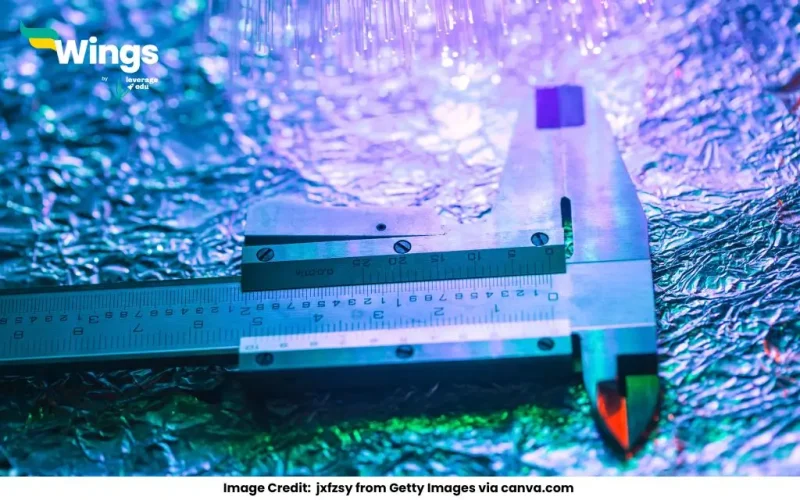The least count of Vernier callipers is the smallest measurement the instrument can accurately measure. It represents the precision of the device and can be determined by the formula: Least Count (LC) = Value of 1 Main Scale Division (MSD) – Value of 1 Vernier Scale Division (VSD)
Complete Answer
Definition of Vernier Callipers
Vernier callipers are precision tools widely used to measure dimensions like lengths, diameters, and depths with a higher degree of accuracy. They consist of:
- Main Scale (MS): A fixed scale marked in millimetres or centimetres.
- Vernier Scale (VS): A movable scale that slides over the main scale and allows smaller divisions to be measured.
Vernier callipers enable measurements to be more accurate than the smallest division of the main scale by using the alignment principle between the two scales.
How to Determine the Least Count of Vernier Callipers?
To practically determine the least count, follow these steps:
Understand the Main Scale Division (MSD): This is the smallest reading on the main scale.
Example – If the main scale has 1 mm divisions, 1 MSD = 1 mm.
Understand the Vernier Scale Division (VSD): This is calculated based on how many Vernier divisions coincide with a specific number of main scale divisions.
Example – If 10 Vernier scale divisions equal 9 main scale divisions, then: 1 VSD = (9 MSD) ÷ 10 = 0.9 mm.
Use the Formula: Subtract 1 VSD from 1 MSD
LC = 1 MSD – 1 VSD = 1 mm – 0.9 mm = 0.1 mm.
Thus, the least count of this Vernier calliper is 0.1 mm or 0.01 cm.
Practical Example
Suppose you are measuring an object. The main scale shows 2.5 cm, and the 3rd Vernier division aligns with a mark on the main scale. The measurement is calculated as:
Measurement = Main Scale Reading + (Vernier Division × LC)
= 2.5 cm + (3 × 0.01 cm)
= 2.53 cm
Why Is the Least Count Important?
The least count determines the precision of a measuring instrument. For Vernier callipers, a small least count (like 0.01 cm) ensures accurate results, making them essential in labs, workshops, and industries.
Common Doubts in Physics
 60,000+ students trusted us with their dreams. Take the first step today!
60,000+ students trusted us with their dreams. Take the first step today!


 One app for all your study abroad needs
One app for all your study abroad needs










